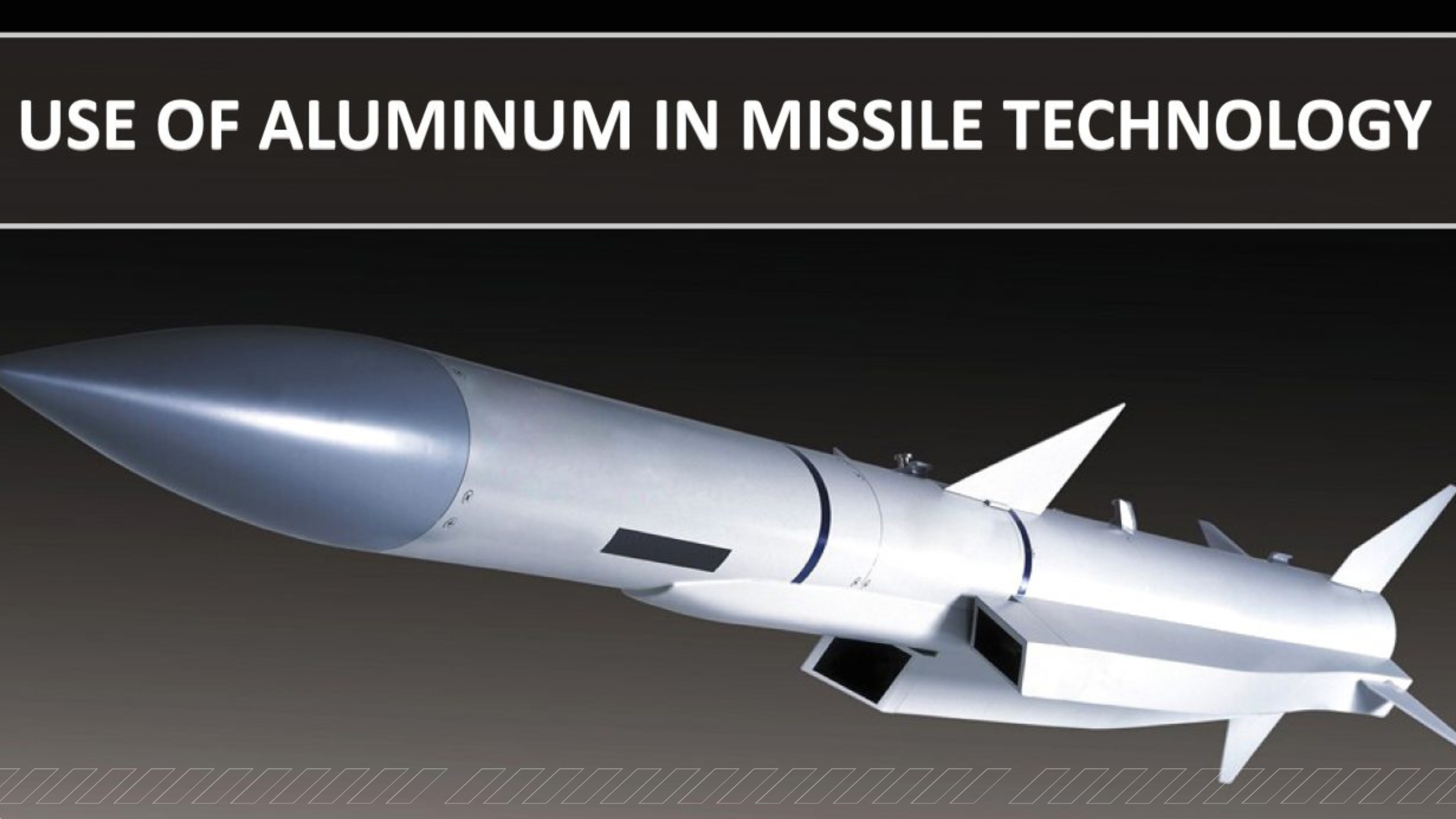Use of Aluminum in Missile Technology
by Jessica
Posted on 01 August, 2022 at 2:30 PM

A crucial part is played by aluminium alloys in our country's defence. Since before World War II, aluminium has played a crucial role in our nation's military endeavours, from the rockets and planes that defend our skies to the armour plating of tanks and transport vehicles. Missile technology is one use for contemporary aluminium alloys that is generally disregarded.
Modern missiles are deadly technical wonders. Since they are precision instruments, their constituent parts must exhibit a high degree of dependability and longevity. They need to be reliable, accurate, effective, and safe to use. Every component of a missile must be of the greatest calibre since our country's interests and the lives of combatants are on the line.
As a result, many of our military's offensive and defensive missile systems rely heavily on aluminium alloys, which are frequently employed in the aerospace, transportation, and building industries.
The Anatomy of a Missile
Using a jet engine or rocket motor, a contemporary missile is a long-range weapon that can maintain self-propelled flight while aiming at a distant object. A targeting system, a flight system, an engine, and a warhead are components of a typical guided missile system in use today. Airborne explosives that are fired from an artillery weapon and do not have self-propulsion are referred to as "shells" and are categorised separately from missiles.
There are various ways to direct a missile toward its objective. One kind of guidance system directs the missile in the desired direction using radiation, such as lasers or radio waves. Examples include heat-seeking missiles, infantry that cooperates to give laser aiming, and radars installed on missiles.
An independent guidance system is a targeting system. These digital techniques require knowledge of the target and missile's present locations in order to determine a path between them. Satellites or a system like INS or TERCOM can be used for this. A human operator who could view both the target and the missile was required in the past to accomplish this through the use of radio relays or cables.
A missile's flying system is another crucial part. This consists of the controls that guide the missile in accordance with the guidance provided by the targeting system. Two main parts make up the flight system: aerodynamic manoeuvring and vectored thrust.
The engine makes all of this possible. The two primary types of engines are jet engines and rocket engines. The former employs either solid or liquid propellant to generate thrust, whereas the latter uses a turbojet, turbofan, or ramjet to generate thrust. The majority of systems' rocket engines utilize solid propellant for fast deployment. Larger ballistic missiles have employed liquid propellant, but the process of filling tanks with it takes time. Cruise missiles can be launched using a rocket motor booster, although they often use a jet engine for sustained flight.
What Makes Aluminum a Good Choice for Missiles?
Aluminum is a fantastic material for missile systems due to its many benefits. For any form of missile, weight is the primary factor to be taken into account. Weight plays a significant role in determining how far the rocket can go because fuel is scarce. The missile is lighter the further it can go to reach its target. A superior strength-to-weight ratio sets aluminium apart from other potential metals for usage.
Aluminum is a fantastic material for missile systems due to its many benefits. For any form of missile, weight is the primary factor to be taken into account. Weight plays a significant role in determining how far the rocket can go because fuel is scarce. The missile is lighter the further it can go to reach its target. A superior strength-to-weight ratio sets aluminium apart from other potential metals for usage.
Of course, durability and strength are crucial considerations. To safeguard the targeting elements and explosives during transportation and flight, missiles need to have a hard exterior. As a result, the missile must be both light and robust enough to endure pressures that could harm the weapon or cause the warhead to explode too soon.
Corrosion-resistant materials must also be used to make missiles. A missile system's efficacy must be relied upon by the various branches of our armed services months or even years after it was constructed. Aluminum is very corrosion resistant, even in the harshest natural settings.
What Role Does Aluminum Play In Missile Systems?
Nearly every component of a missile, from the exterior skin to the tiny electrical parts that make up the missile's targeting and engine systems, is made of aluminium. It makes sense that high-performance aluminium alloys would end up in military-grade missiles given how frequently they are already utilised in the aerospace sector in both aircraft and spacecraft.
A few uses for aluminium are exclusive to missiles. For instance, the shaped charge warheads of anti-tank projectiles, rockets, and guided missiles contain aluminium. Upon impact (or in response to a specific signal), the warhead is detonated by explosive surrounding a conical metal liner; the kinetic energy from the detonation propels the liner material at a high speed, penetrating even extremely thick armour of a targeted vehicle or structure and increasing the impact of the explosive.